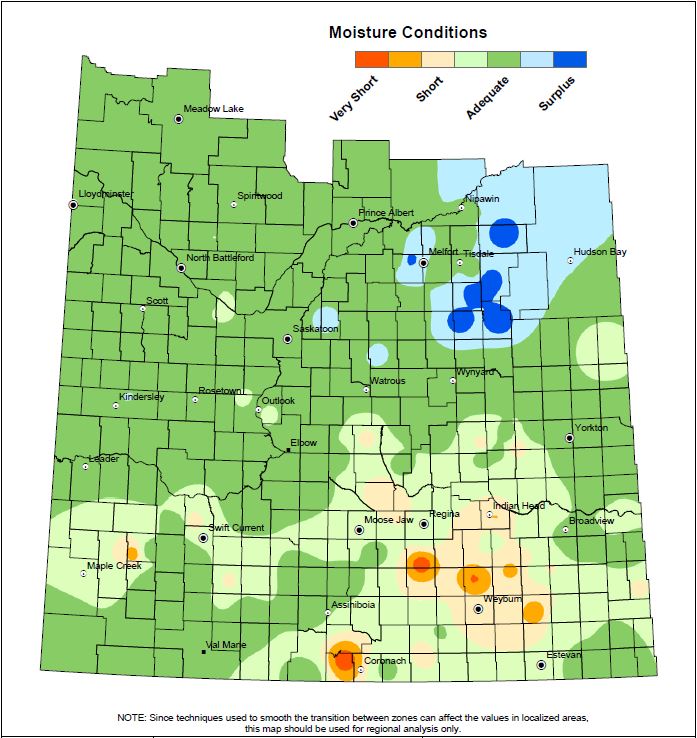A cool and late spring has delayed field work across Saskatchewan with seeding just getting underway. According to the provincial crop report, less than one per cent of the crop is in the ground compared to the five year average of six per cent.

Laura Reiter drove a soil thermometer into the ground waiting for a reading, knowing the soil in the Radisson area is likely still too cold.
“We usually put cereals in first here,” Reiter said reasoning cereals can withstand a little frost which may still be looming.
Cereals need a ground temperature of seven to 10 degrees but just two and a half weeks after snowfall, Reiter’s planting season is falling behind before it’s even begun.
“Moisture is my bigger concern at the moment,” said Reiter.

Get breaking National news
Reiter calculated less than nine centimeters of rain during the 2017 growing season. She hoped winter would deliver.
“Didn’t get a whole lot of snow over the course of the winter. We did get some in March like everybody did but the speed that it melted, most of it ended up into the sloughs.”
Greg Orchard who provides treated seed and fertilizer to producers is the area between Saskatoon and North Battleford said deliveries are normally nearing completion by this time of year.
“Guys just couldn’t commit to certain things and were waiting to see what spring was going to bring and really in the last five to ten days a lot of decisions have been made,” he said.
Adding to the uncertainty, India’s steep tarrifs on Canadian imports including lentils.
Additionally, a grain backlog caused by CN and CP Rail is causing issues. Todd Lewis with the Agriculture Producers Association of Saskatchewan said the impact of that is deeper than tying up funds for spring inputs.
“A lot of the fertilizer in Saskatchewan this year has to be trucked from the plants in Alberta and Manitoba into Saskatchewan and that just adds to our cost.”
Nonetheless, spring has restored optimism for Reiter. “Normal start date around here is usually kind of the end of the first week of May and it is still possible,” she said, after all, a crop is never lost during seeding.









Comments